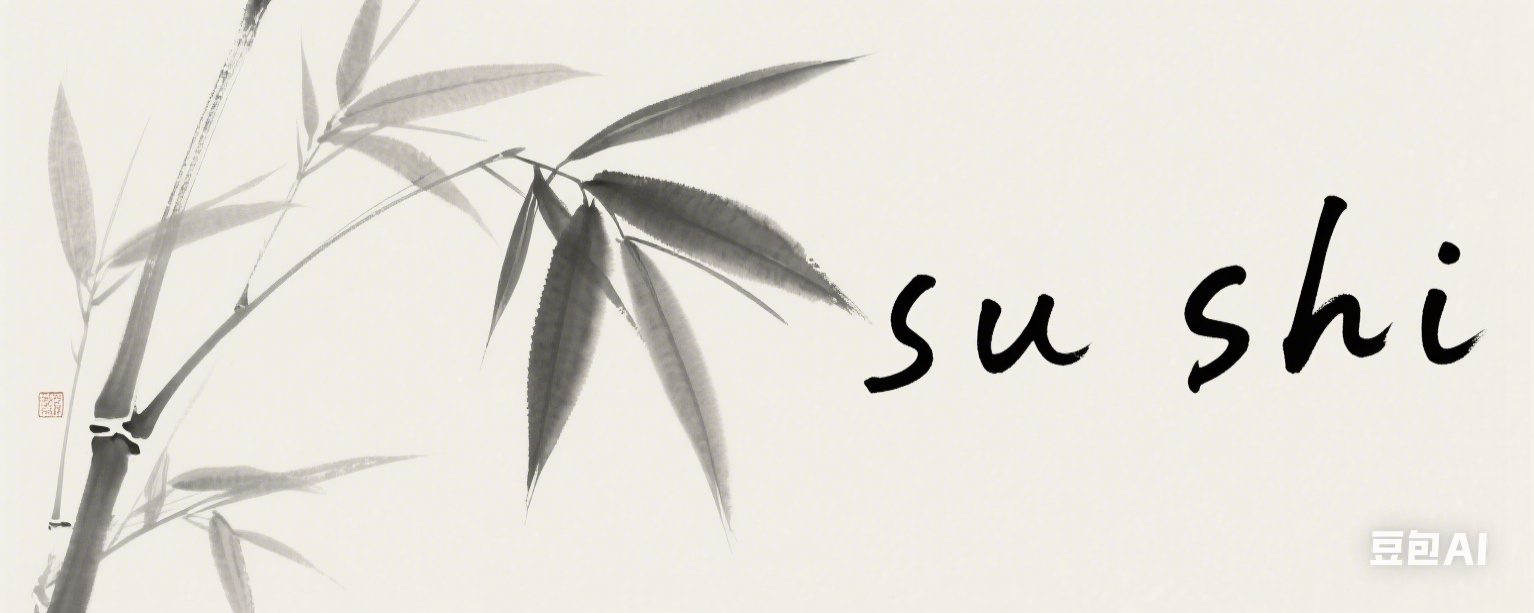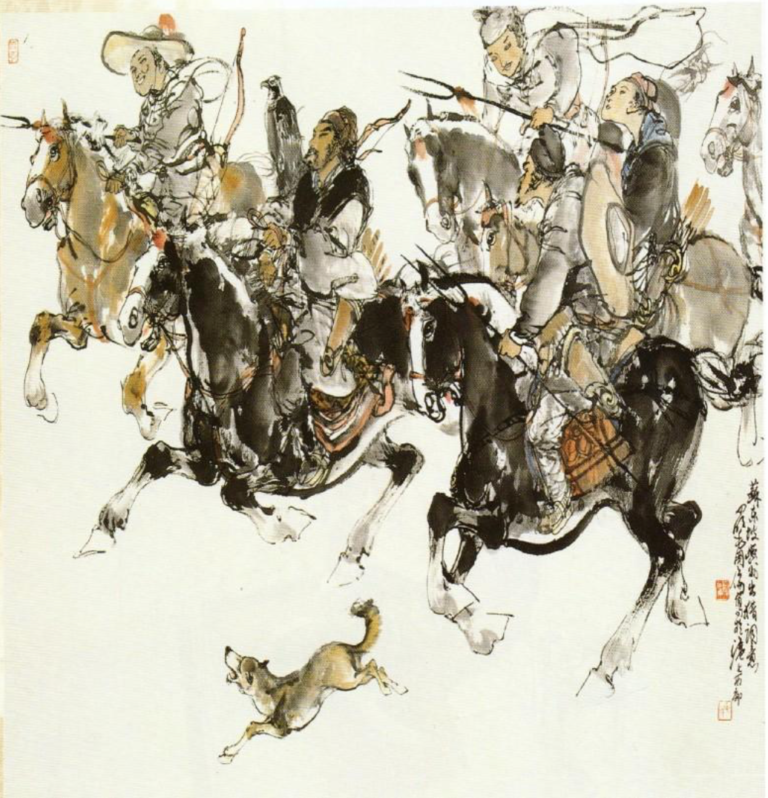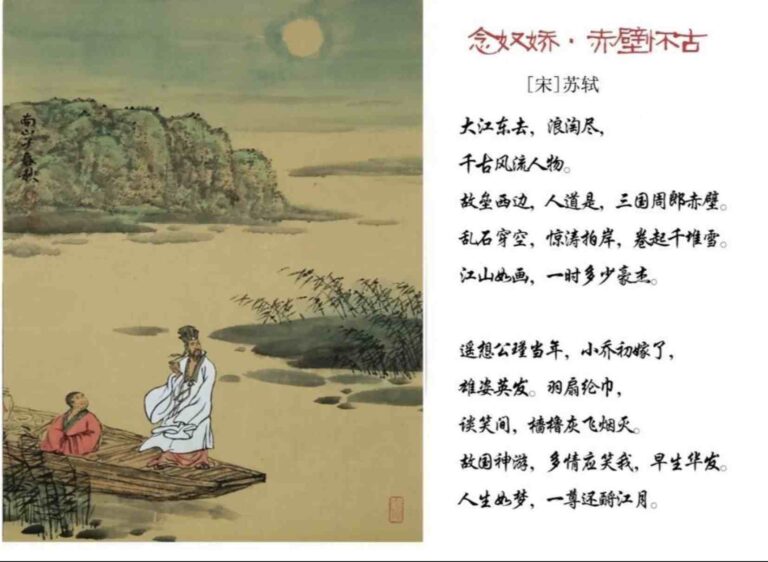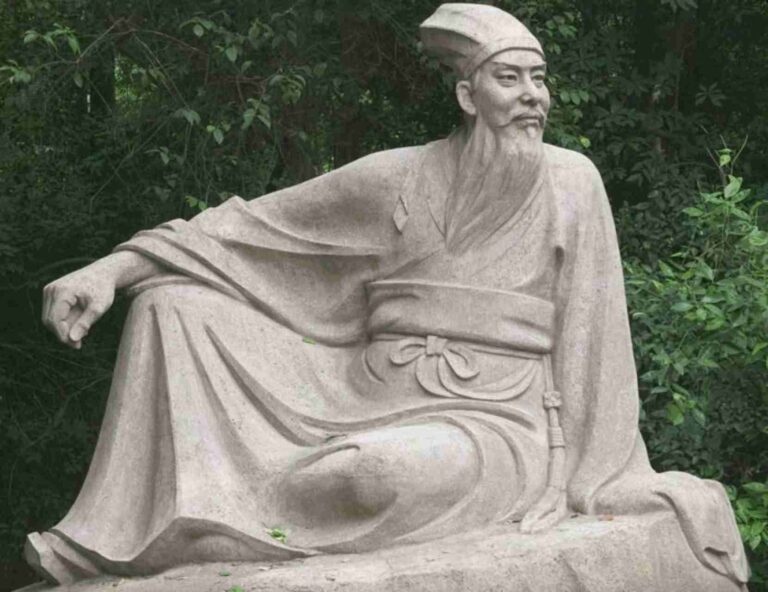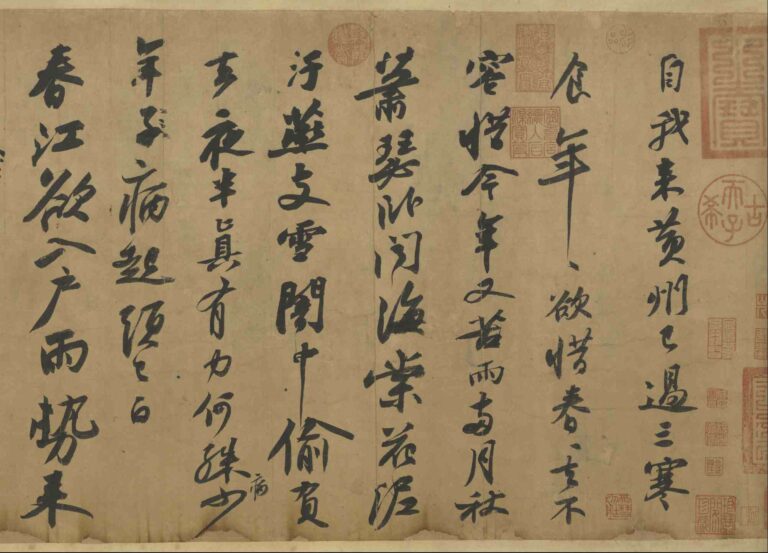How did Su Shi become Su Dongpo?
Keywords: Origin of the Name Dongpo, Meaning of “Dongpo Jushi” (Dongpo Lay Buddhist), Su Shi’s Literary Alias, Dongpo in Huangzhou
I. From the Imperial Censorate to Dongpo: The Survival Wisdom of a Banished Official
1. Timeline: Identity Reconstruction After the Wutai Poetry Case
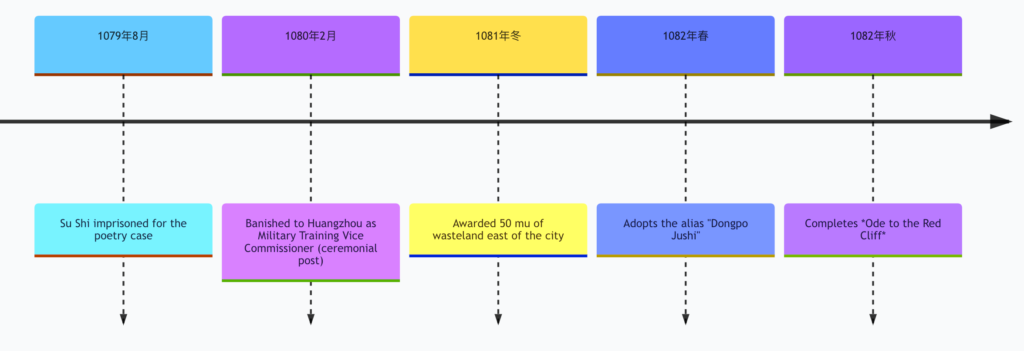
2. Geographical Origins: Decoding the Real Scenery of Huangzhou’s Dongpo
| Modern Coordinates | Geomorphological Features | Su Shi’s Renovation Projects |
|---|---|---|
| Eastern Suburbs of Huanggang, Hubei | Alluvial sandy slope by the Yangtze River | Reclaimed 20 mu of wheat fields |
| Formerly abandoned military land | Planted 300 mulberry trees | |
| Low-lying and waterlogged terrain | Built an underground drainage system |
II. The Cultural Genealogy of “Dongpo”
1. Dual Spiritual Lineage
| Source | Specific Connection | Ideological Fusion |
|---|---|---|
| Bai Juyi’s Dongpo in Zhongzhou | Su Shi’s admiration for “planting trees on Dongpo” | Confucian commitment to public service |
| Buddhist “Jushi” tradition | Lay believers who practice without ordination | Zen philosophy of adaptability |
| Taoist hermit ideas | Zhuangzi story of “Marquis Dongling” abandoning office to grow melons | Taoist concept of harmony with nature |
2. Semiotics in the Naming Ceremony
- Symbolism of Direction: East (wood element) represents growth → Hope in adversity
- Topographical Metaphor: Inclined “slope” (坡) → Poetic balance in a banished life
- Act of Farming: Replacing brush and ink with farming tools → Physical awakening of intellectuals
III. The “Dongpo Phenomenon” in Global Cultural Mirrors
1. Comparative Table of Celebrity Aliases Worldwide
| China | West | Japan | Shared Core |
|---|---|---|---|
| Dongpo Jushi | Voltaire’s “Hermit of Ferney” | Bashō’s “Tōsei” | Dual identity of geography and spirit |
| Farming in Huangzhou | Rousseau’s botany research | Ryōkan’s itinerant monk life | Philosophical practice in nature |
| Dongpo Pork | French coq au vin | Shojin ryōri (Buddhist vegetarian cuisine) | Cuisine as cultural manifesto |
2. Insights for Modern IP Transformation
- Brand Value: From literary alias to cultural landmarks (Su Causeway in Hangzhou, Dongpo Academy in Danzhou)
- Symbolic Economy: Over 1,200 globally registered trademarks related to “Dongpo” (tea, cultural tourism, education)
- Digital Rebirth: NFT Diary of Farming in the Fifth Year of Yuanfeng sold for 230 ETH
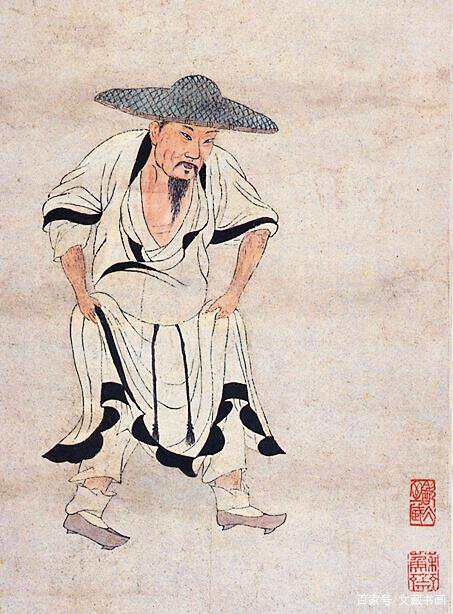
IV. Decoding the Five Cultural Layers of “Dongpo”
1. Survival Strategies
- Economic Source: Annual harvest of 20 shi of barley (≈600 kg today)
- Housing Solution: Self-built “Snow Hall” (China’s first literati-designed studio)
2. Literary Code
- Creative Transformation: 280% increase in poetry production, founding the “Dongpo Style”
- Classic Line: “Looking back at the dreary path, I turn to go, where neither wind nor rain nor sunshine matter.”
3. Philosophical Breakthrough
- Proposed the theory of “finding meaning in objects” → 700 years earlier than Kant’s “purposiveness without purpose”
- Formed an ideological system of “Confucianism as the exterior, Taoism as the skeleton, Buddhism as the heart”
4. Social Currency
- Invented the “Dongpo Straw Hat” fashion: Bamboo hat + wooden clogs, a literati trend
- Established the “Four Scholars of the Su School” academic community
5. Gastronomic Universe
- Developed recipes: Ode to Pork records the slow-cooking method for braised pork
- Brewing experiments: 6 exclusive recipes including honey wine and Zhenyi Wine
V. Becoming “Dongpo“: A Modern Spiritual Cultivation Guide
1. Four Steps for Adversity Transformation
- Geographical Reconstruction: Create a “mental Dongpo” (personal spiritual space) in 困境
- Physical Awakening: Rebuild mind-body connection through manual labor
- Cultural Transcoding: Cross-border expression of professional skills (e.g., programmers writing poetry)
- Community Cultivation: Build your own “Su School social circle”
